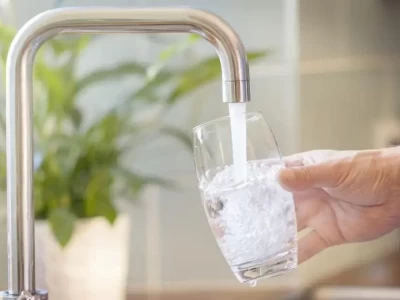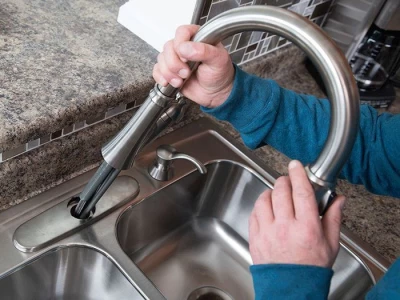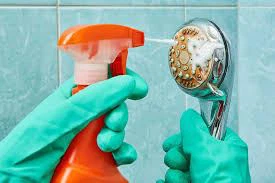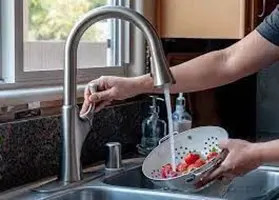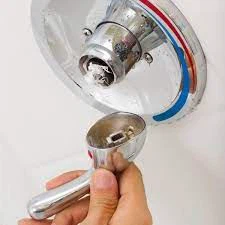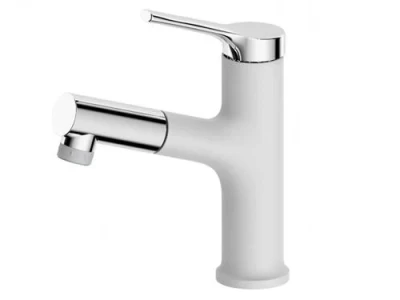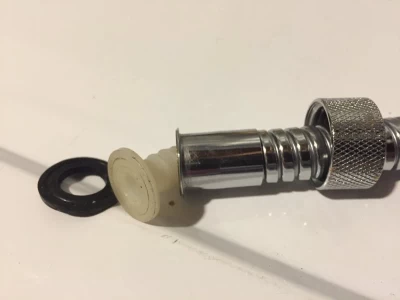Public Healthy And Hygienic Potential Issues In Water Fittings
Faucets or water fittings are essential in almost every environment where people exist, from public places to offices, factories, and homes. They provide us with water, enabling cleanliness, health, and hygiene. In recent decades, advancements in technology and analytical capabilities have revealed new details about faucets or water fittings, their usage, and their effects on health. Consequently, some countries have introduced new standards and regulations addressing these aspects.
While water can pick up various pollutants from all components it contacts (such as pumps, pipes, and valves) along its transmission from the source (like dams or groundwater) to our usage areas, this article focuses solely on pollutants originating from water fittings.
This new situation led to the emergence of initiatives by NGOs and governments. During this period, particularly in the early 2000s, we saw an intensification in the preparation and implementation of various regulations, standards, and laws in the EU and US. These measures aimed to prevent the entry of unhealthy products into their countries, protect consumers, and safeguard local industries against unfair competition.
Materials and Parts of Water Sanitary Fittings: Potential Harmful Effects
Brass Material:
- Usage: Commonly used in the production of bodies, nuts, nipples, spouts, etc.
- Composition: Essentially a copper-zinc alloy, containing 56-64% Cu and 34-42% Zn, with up to 3.5% Pb depending on the production method.
- Potential Harm: In contact with water, it can release Zn and Pb, which are harmful, depending on various factors.
Welding/Soldering Alloy:
- Usage: Used to join various brass parts of the water fitting.
- Composition: Can contain heavy metals, especially cadmium (Cd) and lead (Pb).
- Potential Harm: These heavy metals can dissolve and pass into the water under certain circumstances.
Plastic Material:
- Usage: Typically used for the inner body or nipple, and parts of the opening and closing mechanism
- Potential Harm: Depending on the type of plastic and mold release chemicals used during injection, various organic and inorganic materials can be released into the water.
Rubber Material:
- Usage: Provides sealing at various connection and junction points.
- Potential Harm: Depending on the type of rubber and mold release chemicals used during molding, it may release various organic and inorganic materials into the water.
Grease:
- Usage: Used in opening and closing mechanisms or to facilitate movement on moving rubber parts.
- Potential Harm: Can cause the release of various organic and inorganic materials into the water.
Surface Coating:
- Usage: Applied to the outer surfaces of sanitary fittings to provide a decorative appearance.
- Types: Can be metallic or organic.
- Potential Harm: If the coating penetrates the inner surfaces and comes into contact with water, it may release heavy metals and organic materials into the water.
We see the first applications in this regard in the USA. The NSF 61 standard, published in the 1960s and aimed at the health of drinking water, can be considered one of the pioneers in this field. Especially between 1997 and 2006, various national and international laws, regulations, and standards were implemented in both the USA and various EU countries to protect public health in response to the influx of Far East products that we briefly mentioned above.
Some of the standards or regulations that are widely recognized and even mandatory in some countries during the international trade of water fittings today include:
- NSF 61: USA, Canada
- ACS or NF: France
- WRAS: England
- KTW: Germany
- DWD (98/83/EC): All EU countries (Drinking Water Directive)
- NKB: Scandinavian countries (Denmark, Sweden, Norway, Finland)
- DZR Test: Scandinavian countries, Japan, Australia, New Zeland, South Africa
- GB no lead regulation: Китай
These NSF, ACS, WRAS, and KTW standards are quite similar in content. Essentially, these standards/regulations align closely with the specifications published by the World Health Organization (WHO) regarding drinking water quality, but they contain some differences in terms of limit values and test methods. Accordingly, the quality of drinking water is examined under three main factors:
Physical Conditions
There are limit values determined by both WHO specifications and specified national standards regarding the:
- Color
- Odor
- Turbidity
- Taste
- Conductivity
Chemical and Biological Conditions
Features such as:
- PH value
- Hardness
- Heavy metals content
- Sulfate compounds content
- Nitrate compounds content
- Pesticides (drug residues)
- Various chemicals (contaminated with plastic, rubber, and grease)
The quality of drinking water is subject to strict limits both in WHO and specified standards. Among these, heavy metals such as lead (Pb), mercury (Hg), nickel (Ni), arsenic (As), cadmium (Cd), copper (Cu), chromium (Cr), and antimony (Sb) emerge as the leading harmful components. These heavy metals can originate from the brass alloy itself, the welding or soldering alloys used to join the parts, or the applied coating processes.
Similarly, nitrates (NO3), nitrites (NO2), sulfates (SO4), ammonium (NH4), and chloride (Cl2) components, which can originate from the production processes of the water fitting or from the plastic and rubber parts inside, are among the leading prohibited components. In the last 30-40 years, the widespread use of agricultural chemicals has increased the rates of pesticide residues in surface and underground waters. Consequently, these components have been included among those subject to restrictions in almost all specifications.
Various chemicals used during the production and storage of plastic and rubber parts are also considered pesticides. The amount of these pesticides passing from the fitting parts to the water is examined during the tests of the water fitting.
All the organic and inorganic pollutants mentioned above can occur at various stages of the production of water sanitary fittings and can pass into the water from components such as the body, pipe, nipple, gasket, cartridge, and flexible hose. During tests conducted according to these standards, the inner surfaces of the water fitting are first washed with water of certain properties. Then, the water fitting is filled with reference water, whose component amounts are determined in advance, and subjected to specific test periods. At the end of the test period, the water taken from the water fitting is analyzed to investigate the presence and amount of the aforementioned elements and compounds.
Another harmful effect of drinking water on health is caused by zinc (Zn) dissolving from the brass parts forming the water sanitary fitting and passing into the water. The dissolution of zinc occurs through a different process than the previously mentioned events. Depending on high water hardness, pH level, or the amount of chlorine (Cl) in the water, the zinc (Zn) in the brass alloy can separate and form zinc chloride (ZnCl2), which then mixes into the water. In Scandinavian countries, Australia, Canada, and other regions, the parameter called dezincification resistance (DZR) is used to determine the quality of drinking water, limiting the amount of zinc (Zn) in the water.
Another standard used in Scandinavian countries is the NKB (Nordic Committee for Building Regulations) standard. This standard involves analyzing the amounts of heavy metals (Cd, Ni, Pb) that remain as residues from various production processes, especially on the inner surfaces of the water fittings, to ensure they do not exceed certain limits.
The Drinking Water Directive, which is valid in all EU countries, determines the limit values of pollutants in drinking water and outlines the necessary tests and analyses to ensure compliance.
While water can pick up various pollutants from all components it contacts (such as pumps, pipes, and valves) along its transmission from the source (like dams or groundwater) to our usage areas, this article focuses solely on pollutants originating from faucet.
This situation led to the emergence of initiatives by NGOs and governments. Particularly in the early 2000s, there was an intensification in the preparation and implementation of various regulations, standards, and laws in the EU and US. These measures aimed to prevent the entry of unhealthy products into their countries, protect consumers, and safeguard local industries against unfair competition.

